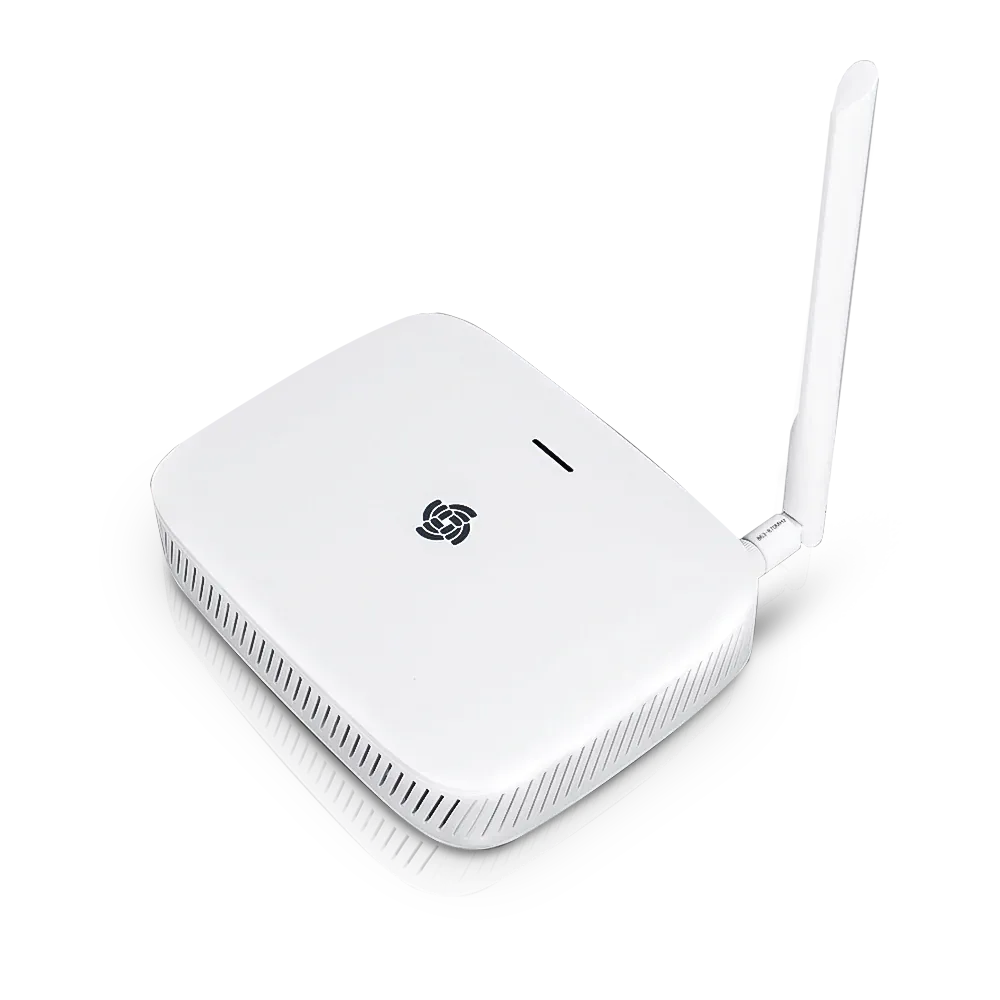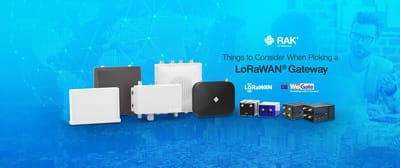All You Need to Know About IoT Antennas: Basic Principles
Introduction
We have all seen the term IoT rise in popularity in the past few years, but few people know what stands behind the abbreviation and the benefits it can bring to everyday life. IoT (Internet of Things) technology aims to provide you with a means to connect devices wirelessly in order to make advanced smart solutions easy to achieve. As the days of wired connections are slowly and surely coming to an end, we are all coming to terms with the reality that we will sooner or later need to start using new and efficient means to connect devices to one another.

As the name suggests RAKwireless specializes in IoT solutions utilizing cutting edge wireless technologies. The company develops high grade products, thus special attention is given to antenna design as they are an integral part of any wireless system and their performance affect the quality of communication.
Most of us don’t realize this fact, but a lot of the devices we interact with or rely on to provide us with services in our daily lives have antennas. Rooftop cellular stations, home routers, smart TVs, your phone, they are everywhere. Antennas hold a key position in wireless data transmissions between devices and that is precisely why they also hold a crucial spot in the RAKwireless product catalog.
LoRa® antennas, Wi-Fi antennas and Cellular antennas are the most commonly used types in IoT and one or more reside in any end-device or network gateway. Their number, quality and location determine how well devices will be able to communicate.
Take the Helium network for example. It is the largest peer-to-peer IoT network to date, rapidly approaching 1M devices worldwide. It provides unprecedented coverage, its hotspots are incredibly long range, which is due to the use of Long-Fi (a variation of the LoRaWAN® protocol stack) in combination with good quality outdoor LoRa antennas, a large number of which come from the RAKwireless Store. These Helium Hotspots are very similar to the Wi-Fi home routers everyone has nowadays, yet they use some clever transmission mechanic and specialized LoRa® antennas, which results in ranges from 1-2 kilometers in dense cities to 10-100s of km in open areas.
Take a look at the MNTD. website if you want to learn more about the Helium Network, the blockchain and $HNT mining and the technology behind it, you might be the next member of the community.
Now that we’re done with the brief introduction, we will go into more detail in the following paragraphs so you learn all the important things required to pick the best antenna for your needs.

Technical Features
In order to get into the technical details and explain key concepts about antennas, we would first need to clarify the specific terms that surround them. For a very basic grasp of how antennas transmit signals (radiate), you should look at the sun, because it is an extremely efficient source of light, as it radiates energy in all directions. In that way it is the closest existing object to an isotropic antenna, which is a theoretical term describing an antenna that radiates equally in all directions. You should also be aware that such an antenna cannot exist on our planet, because the rules of the physical world we occupy prevent the signal from spreading in the required uniform way. The most important terms that you should be aware of are the following:
- Directivity: Now that we know isotropic antennas are impossible in practice, we have to be aware that all antennas come with certain characteristics, which measure the direction in which they effectively radiate based on how they have been built. Directivity measures the degree to which the emitted radiation is concentrated in a single direction (as opposed to the omnidirectional antenna that radiates equally in all direction). The closest you can get to the isotropic antenna in terms of directivity is the donut-like radiation pattern that dipole antennas provide. This pattern is known as an omnidirectional pattern and an example is provided in the following image.
- Gain: Although we have determined that we cannot build an isotropic antenna, if we attempt to build one, the antenna we build would be affected by the physical laws that surround us and we will end up with an antenna that radiates more energy in some directions in comparison to an isotropic antenna. That exact difference in energy is measured in dBi and is known as Gain, while the dBi itself stands for “decibels relative to isotropic”.
- Input Impedance: You normally connect antennas via a cable, what you should know is that all cables have certain measurable impedance. Impedance is the total resistance that the cable presents to the electrical current passing through it. There are different cables, however the ones used in IoT applications have standard impedance of 50Ohm. Antennas have the main goal of transmitting all of the power and energy that is supplied to them, which is also why they must also have matching impedance measured at 50 Ohms (power transfer between two devices is most efficient when their impedances match exactly).
- VSWR: As cables and antennas are not perfect there is a very slight mismatch in their standard impedances, causing some of the signal to be reflected back rather than transmitted. This effect is commonly known as return loss or reflection loss. This is a common occurrence, mainly due to the laws of the physical world we live in, which make perfection in signal transmission an impossibility. The mentioned loss is measured by what is called Voltage Standing Wave ratio (VSWR). A perfect VSWR is 1, while higher number represent more power loss, however values we can realistically expect to achieve are normally 2, 2.5 and 3, with anything below 2 being indication of a quality antenna.
- Polarization: The signal that radiates away from antennas has a loosely defined general direction that translates into a certain field of coverage. Simply put, polarization is the direction of the electromagnetic fields produced by the antenna as energy radiates away from it. If the transmitted signal is meant to travel through breathable air and does not need to leave earth’s atmosphere, the antenna device would be constructed to use linear polarization. Linear polarization is used for LoRa® and Cellular communication, more specifically Vertical polarization (systems that use Horizontal polarization also exist). If the signal you are transmitting is meant to leave the atmosphere, then the antenna you would be using would need to use circular polarization. GPS antennas are specifically made to take advantage of circular polarization as they communicate with space satellites.

- Beamwidth: The angle and measurable area from which the majority of the antenna's peak power radiates is known as beamwidth. It is measured in degrees and can vary depending on the physical characteristics of the antenna. The dipole antenna has a horizontal beamwidth of 360 degrees and it therefore covers a full turn (see the directivity section for an image), however not all antennas are made equal and it is therefore common for other antennas to not have a beamwidth of 360 degrees.

- Efficiency: The ratio of power that is radiated by the antenna relative to the power that is supplied to the antenna is known as antenna efficiency. It is usually measured in an anechoic chamber, where an antenna receives input power and the strength of the radiated electromagnetic field in the surrounding space is measured in order to produce a comprehensive result.
In addition to all of the above, you should keep in mind the importance of placement for the antenna and the specifics for the type of antenna you select. We will dig deeper into these two topics in the next section.
Antenna installation and positioning
If you are reading this article, then you are most likely using your phone’s antenna in order to receive internet connectivity. You could also be using your laptop, tablet or desktop’s Wi-Fi capabilities and respective wireless cards, all of which also include antennas. If you are connected via the cellular network, your transmission is only possible due to the large antennas mounted on rooftop base stations.
New wireless IoT technologies and networks such as LoRa® and LoRaWAN® rely heavily on the use of advanced high performance antennas, since that also naturally raises the range of their capabilities.
The global footprint of the LoRaWAN network protocol is significant, which is why it is widely used in IoT deployments. The purpose of this protocol is to establish stable and secure wireless communication between network gateways and end node devices. Antennas are crucial for transmission range and it is of great importance for them to be working optimally, which is why one must always consider the following when choosing an antenna for these applications”
- Where will the antenna be installed?
When developing an IoT project, it is necessary to know in which conditions the antenna will be installed, because antennas are designed differently for indoor and outdoor use. Let us say that you are planning on developing an IoT system to control access in an office. In such a case it is not necessary to install a waterproof antenna or a high gain one, because an indoor antenna has sufficient gain to provide more than adequate coverage and does not need weather protection.


- Geographical region
Antennas are generally optimized to work on a single frequency or a range of frequencies. LoRaWAN® uses different frequency bands in different regions (these are governed by country bodies). It is not possible to have an antenna that can cover the entirety of the spectrum allocated to LoRaWAN® worldwide, and still be efficient. Thus, antenna models are tuned to one of the regional bands, so check which one is allocate to your country in the official LoRa Alliance® documentation. You can also use the handy Frequency plan The Things Network has created, which is summarized below:
If you would like to find out which of these standards applies to your region, you should go ahead and consult the map on the RAKwireless region guide page.
- Antenna size: The general rule states that the length of an antenna is inversely proportional to the frequency and directly proportional to the wavelength it operates on. Put simply, this means that the higher the target frequency and the shorter the wavelength, the shorter the physical antenna can be made. Sizes of antennas do stray from this general explanation for some use cases, however if you require the antenna signal to reach further away in the physical distance in order to establish successful communication, then you should definitely consider larger and taller antennas first.
This last bit of information concludes the section that defines the most important features one should put focus on while selecting an antenna for their project.
In the following section we will view the types of antennas that you may choose from.
Which antenna do you need?
With the information you have acquired while reading this article, it is safe to say that you now know quite a bit about antennas.
With that said, you should now be ready to review and choose from some of the most common antenna types used nowadays:
You can find the full list of antenna options in the RAKwireless Store.
In case you are still having doubts when making the choice, you may be happy to find that we will be discussing most antenna types in detail within the articles that will follow.





